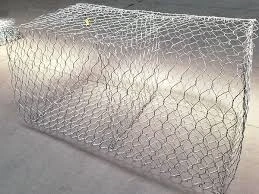-
 Phone:
Phone: -
 Email:
Email:

hexagonal wire mesh sizes
Understanding Hexagonal Wire Mesh Sizes
Hexagonal wire mesh, commonly referred to as chicken wire or hex mesh, is a versatile material widely used in construction, agriculture, and various applications requiring a robust yet lightweight barrier. The unique hexagonal pattern not only provides structural integrity but also allows for effective air and light penetration, making it ideal for a wide range of uses. One of the key considerations when working with hexagonal wire mesh is understanding its sizes, as this directly impacts its functionality and suitability for specific projects.
The Importance of Size in Hexagonal Wire Mesh
The size of hexagonal wire mesh pertains to both the diameter of the wire used and the dimensions of the hexagonal openings. These two factors are critical for determining the strength and durability of the mesh, as well as how well it meets the needs of a particular application. For example, a larger wire diameter offers increased strength, making it suitable for heavy-duty applications like fencing or reinforcing structures, whereas a smaller diameter wire may be used for lighter tasks such as gardening or enclosing small animals.
Opening sizes in hexagonal wire mesh are equally significant. The size of the hexagonal openings usually varies, commonly ranging from 1 inch to 4 inches, depending on the specific requirements. Smaller openings are ideal for preventing the escape of small animals or for use in applications like erosion control. On the other hand, larger openings might be preferred in agricultural settings where maximum airflow is necessary while still preventing larger animals from entering.
Common Sizes and Their Applications
Hexagonal wire mesh comes in various standard sizes, each designed to cater to different needs and applications
1. 1-inch opening with 19-gauge wire This mesh is commonly used for lightweight fencing, gardening, and plant protection. Its smaller openings prevent small animals from accessing delicate plants while providing adequate structure for climbing plants.
hexagonal wire mesh sizes

2. 1.5-inch opening with 16-gauge wire This size is often utilized in farm settings for rabbit and poultry enclosures. The larger openings compared to the 1-inch mesh allow for better visibility and airflow, while the thicker wire offers enhanced durability.
3. 2-inch opening with 14-gauge wire Suitable for heavier applications, this mesh can be used for fencing livestock or as reinforcement in construction projects. Its combination of strength and adequate spacing makes it versatile for various agricultural and industrial needs.
4. 3-inch and 4-inch openings with 12-gauge wire These are typically used for more heavy-duty applications, such as security fencing and protective barriers. The robust wire can withstand harsh weather conditions and physical pressure, ensuring long-lasting performance.
Selecting the Right Size
Choosing the appropriate size of hexagonal wire mesh depends on the intended application. For instance, if the goal is to secure a garden and prevent small pests, opting for a finer mesh (such as 1-inch) will be most effective. Conversely, if it is being used for a livestock enclosure, a thicker wire with larger openings (like 2-inch) might be necessary to ensure both security and durability.
It is also essential to consider the environmental conditions the wire mesh will endure. Outdoor applications might require more robust materials to withstand varying weather patterns, such as wind, rain, or snow, which can necessitate opting for larger gauges or treated wires to prevent rust and corrosion.
Conclusion
Understanding hexagonal wire mesh sizes is crucial for ensuring that the materials selected meet the demands of specific projects. From agricultural uses to construction, the right mesh can provide effective barriers and support systems tailored to the needs of the task. By carefully considering the wire diameter and opening size, users can ensure optimal performance, durability, and effectiveness for their projects. Whether you're building a garden enclosure or reinforcing a construction site, selecting the suitable hexagonal wire mesh is a step towards achieving success in your endeavors.
-
Wire Mesh for Every Need: A Practical SolutionNewsJul.25,2025
-
Steel Fences: Durable, Secure, and Stylish OptionsNewsJul.25,2025
-
Roll Top Fencing: A Smart Solution for Safety and SecurityNewsJul.25,2025
-
Cattle Farm Fencing Solutions for Maximum SecurityNewsJul.25,2025
-
Affordable Iron Binding Wire SolutionsNewsJul.25,2025
-
Affordable Galvanized Wire SolutionsNewsJul.25,2025
-
Wire Hanger Recycling IdeasNewsJul.25,2025








